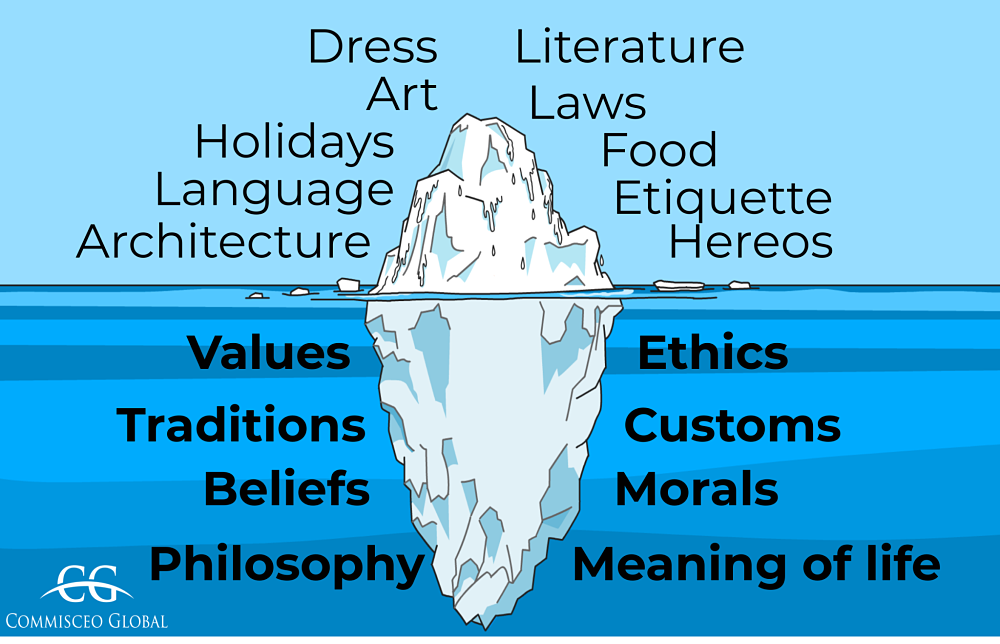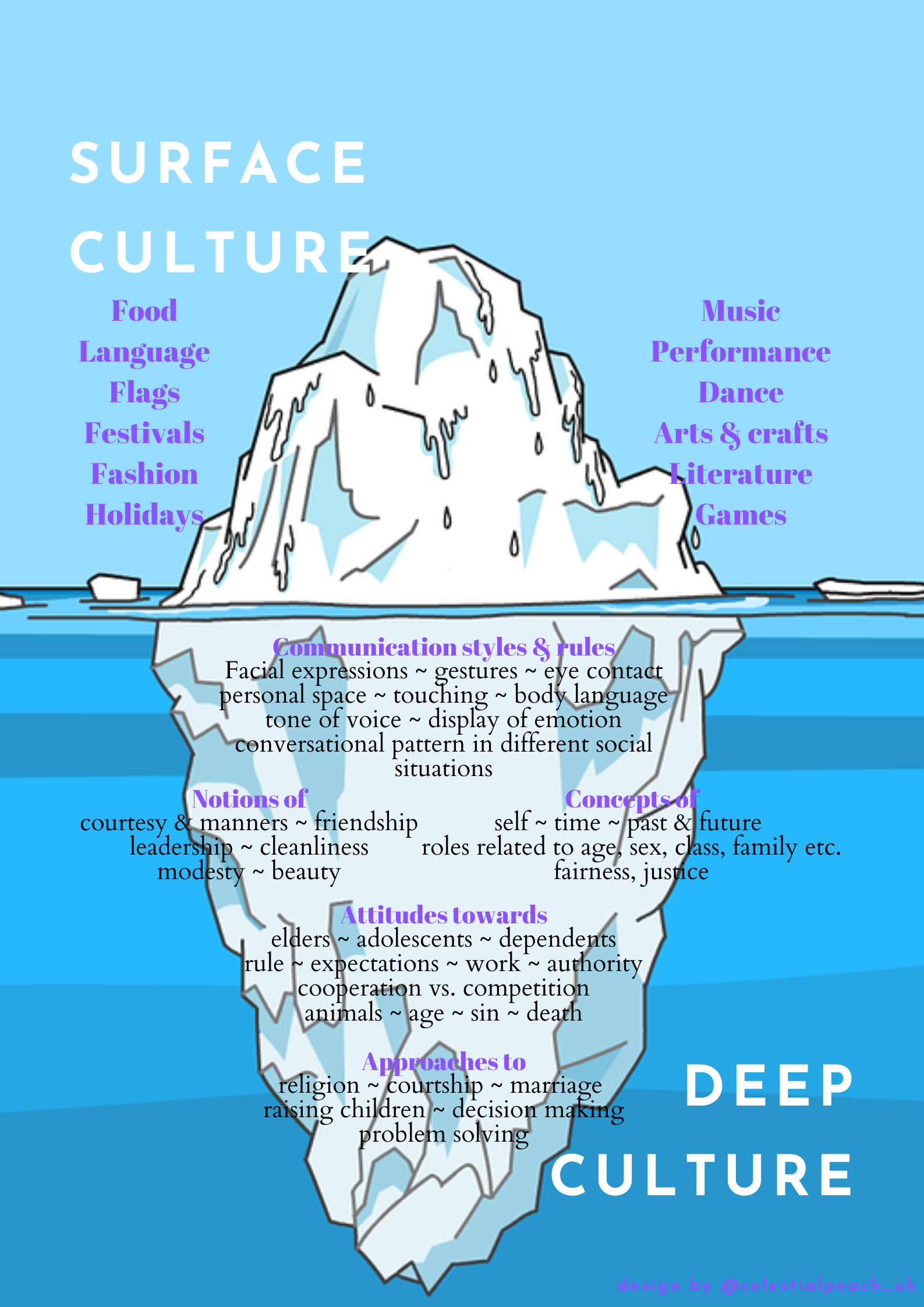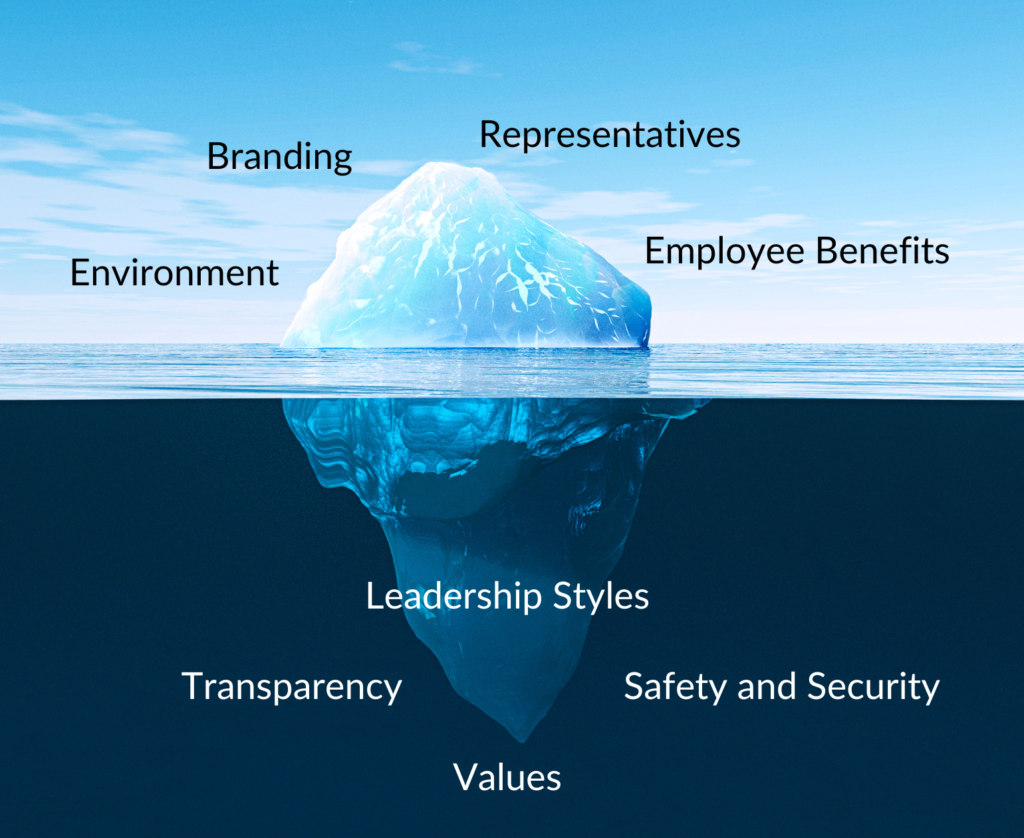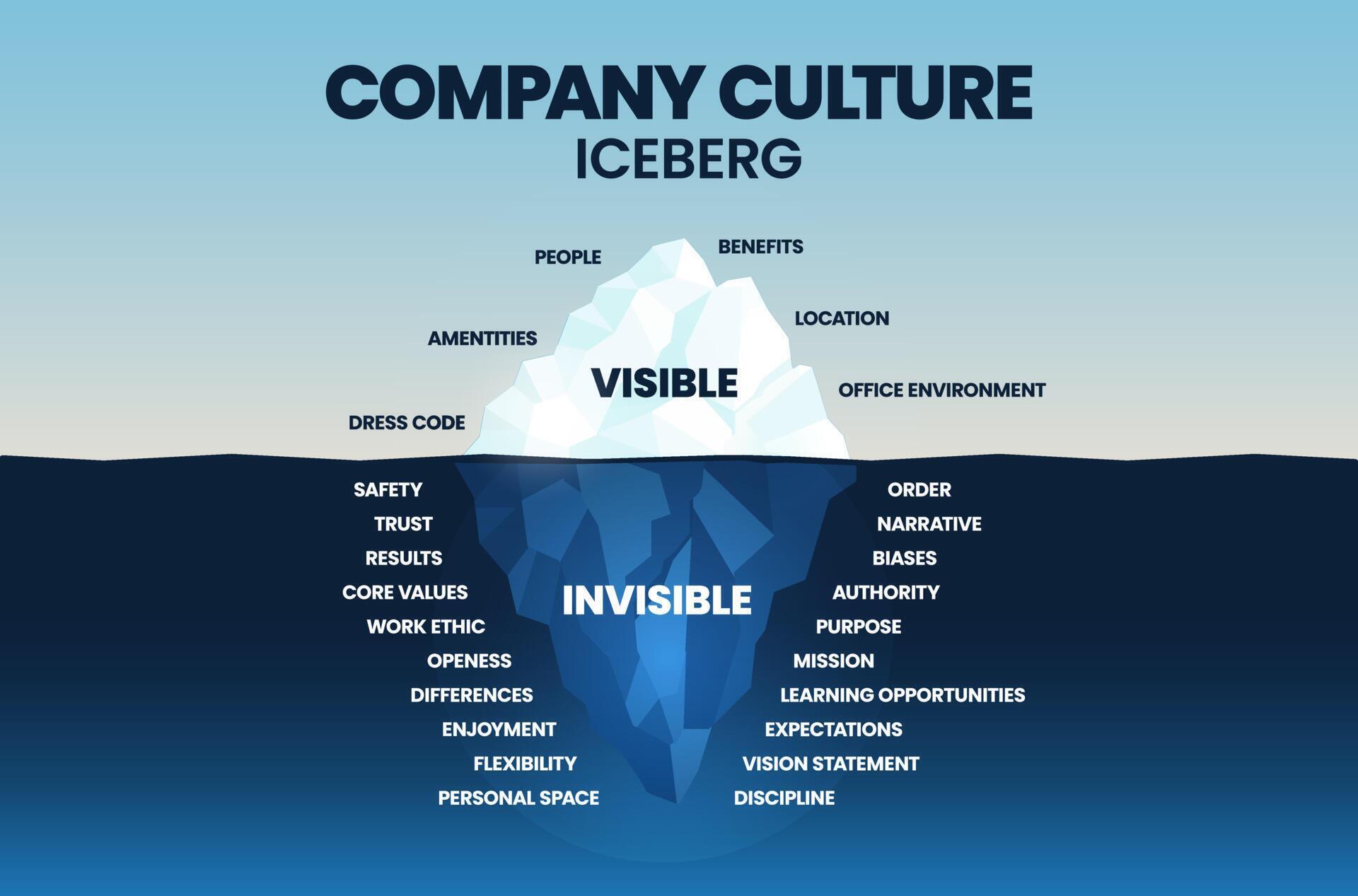
Iceberg model of corporate culture by Edward Twitchell Hall (1989). Download Scientific Diagram
The Iceberg Model of Culture. Source publication +31 A Case Study on Increasing Intercultural Communicative Competence: Exploring Skills, Attitudes, and Knowledge Thesis Full-text available Mar.

Cultural Iceberg Model Wiki Eurth
Culture of the Classroom/School Icebergs: A second potential practice is a slight variation on the cultural iceberg in which students can create cultural icebergs focusing on the classroom and school community cultures.The teacher should also complete an iceberg. As a class you can compare the teacher's iceberg to the students' and discuss areas where the teacher's perception of the classroom.

Iceberg Theory
The iceberg model helps to show us that a few easily visible elements of culture are above the surface but that below the surface lie the invisible and numerous elements that make up culture. Ethnocentrism is an important word to know; it indicates a mindset that your own culture is superior while others are inferior.

Intercultural Training and the Iceberg Model
The tip of the iceberg is 'the way we do things around here'. The depths obscure the reasons why we do things, and are usually unplumbed. Braithwaite uses former Prime Minister Tony Blair's approach to brokering the Good Friday Agreement in Northern Ireland as a possible model for culture change in the NHS. Where the analogy might struggle.

How To Be Culturally Appreciative in 2020 — Celestial Peach
Iceberg Model of Culture September 28, 2022 A strong culture is a vital component of any thriving organization. Yet, this is a concept that many company leaders find relatively elusive. In some ways it can feel like an intangible idea, based around values and attitudes.

PPT The Iceberg Model of Culture PowerPoint Presentation, free download ID6872279
An Analogy of Culture. Within intercultural training though there is one model or analogy of culture that most agree sums up the concept best; and that is the iceberg. The iceberg perhaps lends itself best to this as it so graphically demonstrates the idea of having both a visible and invisible structure. Furthermore, the fate of the Titanic.

Understanding the Culture of a Company, Part 1 Surface Culture LaConte Consulting
" Iceberg Model of Culture ," established by Edward T Hall in 1976, describes how organizational culture is like an iceberg found in the cold waters of the Arctic. Only 10% of an iceberg is visible above water, while the rest is submerged under it; this is known as the "iceberg effect."

Iceberg Model of Culture Terryberry
The term 'Iceberg Model of Culture' is inspired by the icebergs found in polar seas. An iceberg has visible parts on the surface of the water and invisible parts that are underwater. Often, up to 90% of an iceberg's actual area remains hidden underwater. Similarly, culture and behaviors have both visible and invisible components.

The Iceberg Model of Culture Download Scientific Diagram
The iceberg model of culture or cultural berg is used as a ordinary metaphor, but wie well do you knowledge it? Before we deep dive into its layers and their key in einer organization, let's understand it on a high level. Hall's Cultural Iceberg Model.

The Iceberg Model of Culture Download Scientific Diagram
What is the Iceberg Model of Culture Layers of the Iceberg Model of Culture 1. Perks and benefits 2. Dress and appearance 3. Technology 4. Language 5. Rewards and recognition 1. Authority 2. Health and wellbeing 3. Purpose and meaning 4. Communication 5. Employee engagement 6. Learning and development 7. Collaboration and teamwork Final Thoughts

What’s a Cultural Iceberg? Expat with Kids
What is the Iceberg Model of Culture? The iceberg model of culture is a detailed structure of parameters that helps you determine the quality of your organizational culture. Based on the analogy of an iceberg that has both a visible and hidden portion, this model assesses the effectiveness of an organization's visible and hidden cultural elements.

Iceberg model of corporate culture by Edward Twitchell Hall (1989). Download Scientific Diagram
ICEBERG HALL'S ANALOGY FOR APPROACHING INTERCULTURAL UNDERSTANDING The concept of the cultural iceberg was coined in 1976 by Edward T. Hall, who suggested that culture is analogous to an iceberg in that only about 10% of the iceberg is visible at any given time and that a large part of it is hidden beneath the surface.

The Company Culture iceberg model allows you to measure your organizational culture, helps
Iceberg Theory of Culture In the 1970s, American anthropologist Edward T. Hall developed the iceberg theory of culture, which states that the viewed, observed, and experienced parts of.

The Iceberg Model of Culture. Download Scientific Diagram
The culture model developed by Edgar Schein, sometimes called the cultural triangle, the three levels of culture model, or iceberg model can be used to understand and shape an organization's culture. If your organization is like most others, it will spend a lot of time discussing its "culture" and importance.

How to Use The Iceberg Model of Organisational Culture
The Iceberg Model of culture (adapted from Rogers and Steinfatt, 1998) Source publication TOWARD AN INTEGRATED APPROACH TO LANGUAGE, CULTURE AND COMMUNICATION IN THE FOREIGN LANGUAGE CLASSROOM.

Edward T. Hall's Iceberg model about Organisational Culture Download Scientific Diagram
Aims • To examine the usefulness of cultural briefing for people going to live, work or holiday abroad. • To identify the most important elements in cultural briefing.